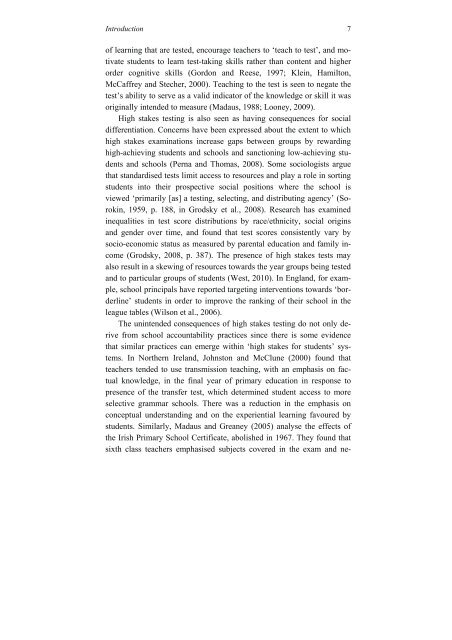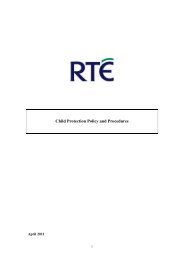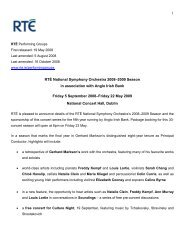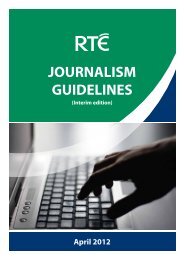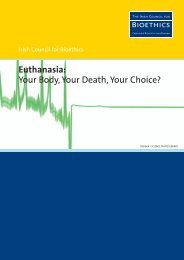From Leaving CertiFiCate to Leaving SChooL a Longitudinal Study ...
From Leaving CertiFiCate to Leaving SChooL a Longitudinal Study ...
From Leaving CertiFiCate to Leaving SChooL a Longitudinal Study ...
Create successful ePaper yourself
Turn your PDF publications into a flip-book with our unique Google optimized e-Paper software.
Introduction 7<br />
of learning that are tested, encourage teachers <strong>to</strong> ‘teach <strong>to</strong> test’, and motivate<br />
students <strong>to</strong> learn test-taking skills rather than content and higher<br />
order cognitive skills (Gordon and Reese, 1997; Klein, Hamil<strong>to</strong>n,<br />
McCaffrey and Stecher, 2000). Teaching <strong>to</strong> the test is seen <strong>to</strong> negate the<br />
test’s ability <strong>to</strong> serve as a valid indica<strong>to</strong>r of the knowledge or skill it was<br />
originally intended <strong>to</strong> measure (Madaus, 1988; Looney, 2009).<br />
High stakes testing is also seen as having consequences for social<br />
differentiation. Concerns have been expressed about the extent <strong>to</strong> which<br />
high stakes examinations increase gaps between groups by rewarding<br />
high-achieving students and schools and sanctioning low-achieving students<br />
and schools (Perna and Thomas, 2008). Some sociologists argue<br />
that standardised tests limit access <strong>to</strong> resources and play a role in sorting<br />
students in<strong>to</strong> their prospective social positions where the school is<br />
viewed ‘primarily [as] a testing, selecting, and distributing agency’ (Sorokin,<br />
1959, p. 188, in Grodsky et al., 2008). Research has examined<br />
inequalities in test score distributions by race/ethnicity, social origins<br />
and gender over time, and found that test scores consistently vary by<br />
socio-economic status as measured by parental education and family income<br />
(Grodsky, 2008, p. 387). The presence of high stakes tests may<br />
also result in a skewing of resources <strong>to</strong>wards the year groups being tested<br />
and <strong>to</strong> particular groups of students (West, 2010). In England, for example,<br />
school principals have reported targeting interventions <strong>to</strong>wards ‘borderline’<br />
students in order <strong>to</strong> improve the ranking of their school in the<br />
league tables (Wilson et al., 2006).<br />
The unintended consequences of high stakes testing do not only derive<br />
from school accountability practices since there is some evidence<br />
that similar practices can emerge within ‘high stakes for students’ systems.<br />
In Northern Ireland, Johns<strong>to</strong>n and McClune (2000) found that<br />
teachers tended <strong>to</strong> use transmission teaching, with an emphasis on factual<br />
knowledge, in the final year of primary education in response <strong>to</strong><br />
presence of the transfer test, which determined student access <strong>to</strong> more<br />
selective grammar schools. There was a reduction in the emphasis on<br />
conceptual understanding and on the experiential learning favoured by<br />
students. Similarly, Madaus and Greaney (2005) analyse the effects of<br />
the Irish Primary School Certificate, abolished in 1967. They found that<br />
sixth class teachers emphasised subjects covered in the exam and ne-


